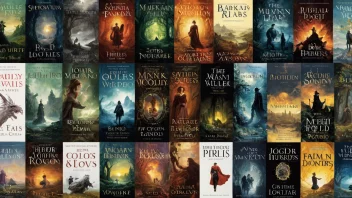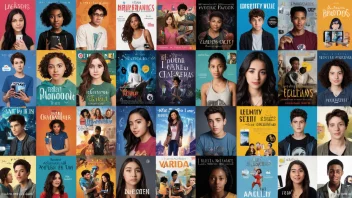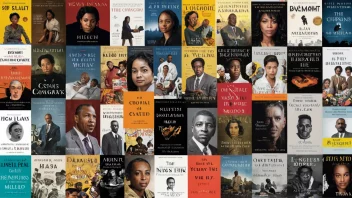The supernatural has long captivated the human imagination, serving as a portal to explore the unknown, challenge reality, and examine the deeper aspects of the human experience. Classic literature, in particular, has been a rich ground for the exploration of supernatural themes, allowing authors to weave elements of the otherworldly into their narratives. From the ghostly apparitions in Shakespeare's plays to the existential dread in Mary Shelley’s works, the portrayal of the supernatural in classic literature not only reflects societal fears and beliefs of the time but also serves as a mirror to our own psychological landscapes. This article delves into the multifaceted representations of the supernatural in classic literature, analyzing how these elements shape the narrative, character development, and thematic depth across genres.
Historical Context of the Supernatural in Literature
The supernatural has been a significant element in storytelling since ancient times. In classic literature, the portrayal of the supernatural often intersects with the historical and cultural contexts in which the works were produced. The rise of the supernatural in literature can be traced back to various movements, including the Romantic and Gothic periods, where there was a fascination with the mysterious, the sublime, and the irrational.
The Gothic Tradition
The Gothic tradition, which emerged in the late 18th century, is particularly notable for its emphasis on the supernatural. Authors like Edgar Allan Poe and Mary Shelley infused their works with elements of horror, the macabre, and the uncanny. Shelley’s novel Frankenstein exemplifies the tension between scientific exploration and supernatural consequences, as Victor Frankenstein’s quest for knowledge leads to the creation of a creature that embodies both the human and the monstrous.
Romanticism and the Supernatural
Romantic writers such as Samuel Taylor Coleridge and William Wordsworth also explored supernatural themes, but often in the context of nature and human emotion. Coleridge’s poem The Rime of the Ancient Mariner showcases the supernatural through the mariner’s encounter with ghostly figures and the curse of the albatross, illustrating the moral and existential dilemmas faced by humanity.
Key Works and Analysis
Shakespeare’s Influence
William Shakespeare’s plays frequently incorporate supernatural elements, serving as pivotal devices that propel the narrative and deepen the emotional resonance. His play Macbeth is a prime example, where the three witches symbolize fate and ambition, invoking a sense of foreboding that drives Macbeth’s tragic downfall. The supernatural in Macbeth raises questions about free will, morality, and the consequences of unchecked ambition.
The Haunting in Gothic Literature
Gothic literature often features haunted settings and spectral figures, representing the fears and anxieties of the characters. In Charlotte Brontë’s Jane Eyre, the presence of the supernatural is felt through the enigmatic figure of Bertha Mason, whose haunting existence in the attic serves as a metaphor for the repressed and marginalized aspects of society. The interplay of the supernatural with the social themes of class and gender provides a rich ground for analysis.
Mary Shelley’s Frankenstein
Mary Shelley’s Frankenstein not only explores the supernatural through the act of creation but also delves into profound philosophical questions about humanity, identity, and the limits of scientific exploration. The creature, often misunderstood and labeled as a monster, embodies the fear of the unknown and raises ethical considerations about the responsibilities of a creator towards their creation. Shelley’s work invites readers to reflect on the consequences of playing god and the nature of humanity itself.
Characterization and the Supernatural
The portrayal of the supernatural in classic literature significantly influences character development. Characters often grapple with their beliefs, fears, and moral choices in response to supernatural events. This interaction reveals their innermost thoughts and motivations.
Internal Conflicts
In Dracula by Bram Stoker, the characters’ encounters with Count Dracula force them to confront their fears and desires. Jonathan Harker’s transformation from a naive solicitor to a man haunted by the supernatural reflects the broader themes of sexuality, power, and the Victorian anxieties surrounding modernity. The supernatural acts as a catalyst for character growth, pushing them to face their darkest fears.
Gender and the Supernatural
The supernatural also plays a crucial role in exploring gender dynamics in classic literature. In The Turn of the Screw by Henry James, the ambiguous supernatural elements serve to question the reliability of the narrator, as well as societal views on femininity and sanity. The character of the governess embodies the struggle between rationality and the supernatural, reflecting the limitations placed on women during the Victorian era.
Thematic Exploration of the Supernatural
The supernatural serves as a vehicle for exploring various themes in classic literature, including morality, existentialism, and the human condition. It allows authors to tackle complex issues and provoke thought among readers.
Morality and Consequences
The theme of morality is prevalent in works that incorporate supernatural elements. In Shakespeare’s Hamlet, the appearance of the ghost of King Hamlet ignites a moral dilemma for the young prince, who must navigate the complexities of revenge and justice. The supernatural forces Hamlet to confront not only his own morality but also the moral fabric of society.
Existential Questions
Classic literature often grapples with existential questions through supernatural elements. In Fyodor Dostoevsky’s Crime and Punishment, the protagonist Raskolnikov experiences a psychological torment that blurs the lines between reality and the supernatural. His internal struggle reflects the human search for meaning in a chaotic world, challenging readers to contemplate the nature of guilt, redemption, and the existence of a higher moral authority.
Literary Trends and Modern Interpretations
The portrayal of the supernatural in classic literature continues to influence contemporary works, reflecting ongoing societal concerns and the evolution of literary styles. Modern interpretations of classic supernatural themes often reimagine traditional narratives through new lenses.
Contemporary Adaptations
Many contemporary authors draw inspiration from classic literature, reinterpreting supernatural elements for modern audiences. Works like The Silent Patient by Alex Michaelides and Mexican Gothic by Silvia Moreno-Garcia infuse classic themes of horror and the supernatural with fresh perspectives, exploring psychological and cultural dimensions.
The Role of Technology
As technology advances, new forms of storytelling emerge that incorporate supernatural elements. The rise of digital media and interactive narratives allows for innovative explorations of the supernatural, blurring the lines between fiction and reality. This evolution invites readers to engage with classic themes in dynamic ways, fostering a renewed appreciation for the power of the supernatural in literature.
Conclusion
The portrayal of the supernatural in classic literature serves as a powerful lens through which to examine the human experience, societal beliefs, and existential questions. From the haunted castles of Gothic novels to the moral dilemmas faced by characters in Shakespearean plays, the supernatural transcends time and continues to resonate with readers. As we explore these timeless themes, we find that the supernatural not only enriches our understanding of literature but also reflects our own fears, desires, and the mysteries of existence. By engaging with these classic works, we foster a deeper appreciation for the artistry of storytelling and the enduring impact of the supernatural in literature.






